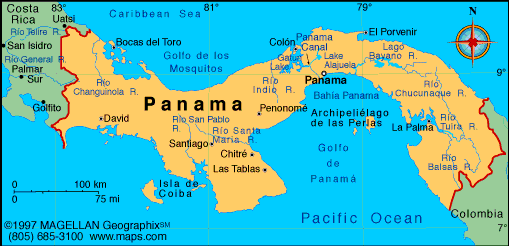-
While Panama is part
of modern day Central America, it is often not associated with
Central American history because it did not become its own nation
until 1903, when it gained independence from Colombia.(32)
-
The United States was
the primary cause for Panama’s independence in 1903. Because the
U.S. had agreed that Panama would be the ideal spot for a canal
leading to the U.S., the American government needed access to the
Panamanian isthmus. By persuading and funding an independence
movement in Panama, the newly formed nation signed a treaty with the
U.S. allowing it to build a canal through a strip of Panamanian land
that was leased to them. In return, the U.S. vowed to maintain
order and independence in the new country of Panama.
-
The canal was
finished in 1914 and was a great benefit to U.S. commerce with Latin
America and Asia. Not only did it considerably cut trade costs with
foreign countries, but it also gave the U.S. a military stronghold
against European opposition in Central and Latin America.
-
While these
commercial and military motives for building the canal were obvious,
the U.S. still tried to hide them behind the idea that their moral
obligations led them to help bring independence to oppressed peoples
that were incapable of obtaining self-governance by themselves.(33)
-
The building of the
canal in the U.S.-occupied Canal Zone brought many workers to this
Panamanian land to help construct the large canal. The U.S.
depicted it as a carefree environment where white, Americans were
building the canal. The truth was that the majority of the workers
employed by the U.S. in Panama were black people, many of whom had
come to Panama from various places in the Caribbean in search of work. A racial caste system was enforced and any black people
in the Canal Zone were relegated to inferior living situations,
education, pay, and working conditions. After the canal was
finished, these conditions continued on for the people that
continued to live there. It wasn’t until the 1950’s that the overt
racism and segregation in the Canal Zone saw any real change for the better.(34)
|



